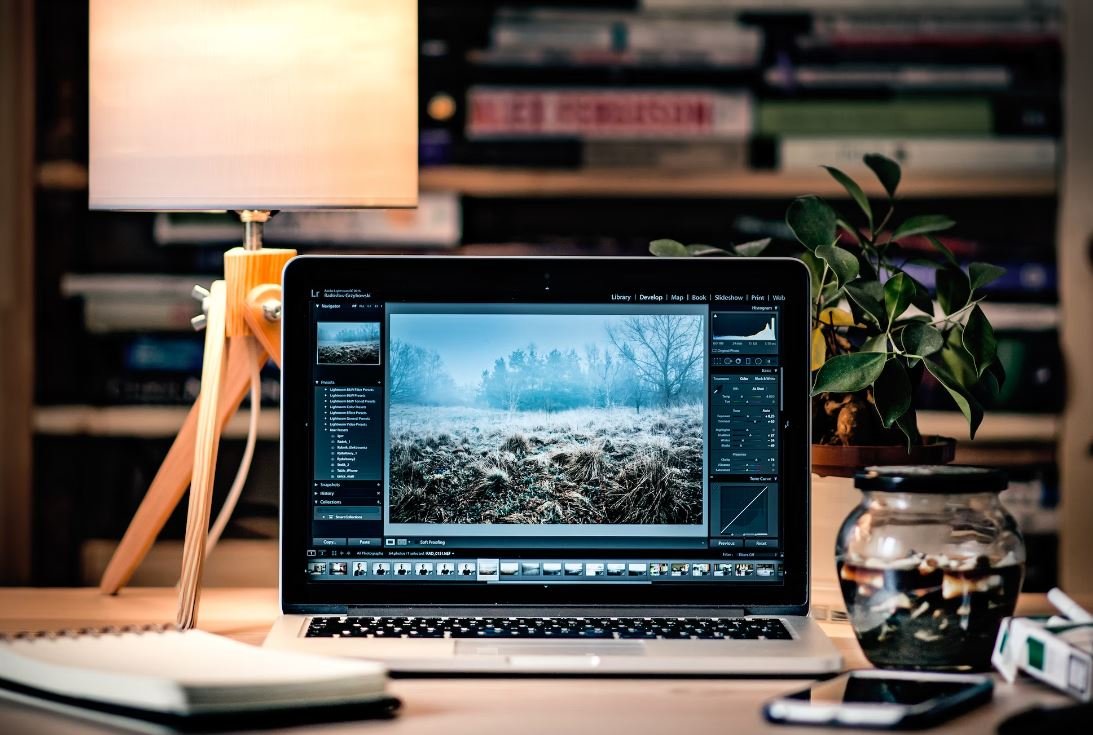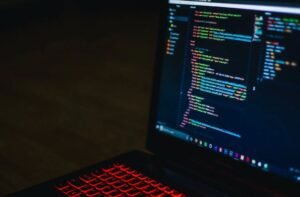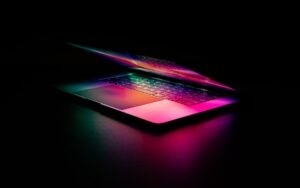AI Art and Misinformation
With the rapid advancements in Artificial Intelligence (AI), it comes as no surprise that AI is now capable of creating art. However, this technological breakthrough also raises concerns regarding misinformation and the role of AI in visual content creation.
Key Takeaways
- AI is now capable of creating art, but this technology raises concerns about misinformation.
- Misinformation through AI-generated art can have serious implications for various industries and society as a whole.
- Fact-checking and critical evaluation of AI-generated art are crucial in addressing the issue of misinformation.
- Collaboration between AI developers, artists, and experts in various fields is necessary to establish ethical guidelines for AI art.
AI-generated art refers to art produced or manipulated by AI algorithms. These algorithms analyze vast amounts of data to understand patterns and generate new visual content. *AI art blurs the boundaries between human creativity and machine-generated output, challenging traditional notions of authorship and creativity.*
One of the concerns surrounding AI art is the potential for misinformation. Misleading or fabricated art created by AI algorithms can have serious implications for various industries and society as a whole. Given the rise of deepfake videos and images, the authenticity and reliability of AI-generated art come into question. It is crucial to ensure that AI art is not used as a tool of deception or manipulation.
The issue of misinformation can be addressed through fact-checking and critical evaluation. *Evaluating the sources and techniques used in creating AI-generated art can help identify any potential biases or inaccuracies.* Additionally, collaboration between AI developers, artists, and experts in various fields is necessary to establish ethical guidelines for AI art. This interdisciplinary approach can help ensure that AI art is transparent, responsible, and free from misinformation.
The Impact of AI Art Misinformation
Misinformation through AI-generated art can have significant consequences. Here are some of the potential impacts:
- False historical narratives: AI-generated art can contribute to the creation of fictional historical events or figures, misleading future generations.
- Fake evidence: AI-generated art can be used to fabricate evidence for legal or political purposes, undermining the trust in visual documentation.
- Art market: The presence of AI-generated art in the market raises questions about authenticity, ownership, and value.
| AI Art | Potential Misinformation |
|---|---|
| AI-generated painting depicting a historical event | Falsely portrays a non-existent event as historically accurate. |
| AI-generated photograph doctored to show a public figure engaging in inappropriate behavior | Creates a false narrative and damages the reputation of the person depicted. |
Misinformation through AI art not only has immediate effects but also has lasting implications on trust, knowledge, and societal discourse. As AI technology continues to evolve, it is crucial to stay vigilant and ensure that AI-generated art is used responsibly and ethically.
Ethical Guidelines and Future Considerations
Addressing the issue of AI art and misinformation requires the development of ethical guidelines and ongoing discussions. Some considerations include:
- Transparency: AI algorithms used in creating art should be transparent, allowing users to understand the process and potential biases involved.
- Fact-checking: Establishing fact-checking procedures and tools specific to AI-generated art can help verify the authenticity and accuracy of the visual content.
- Education: Promoting digital literacy and critical thinking skills can empower individuals in evaluating AI-generated content.
By implementing these measures, AI art can continue to evolve and contribute to the artistic landscape without compromising the integrity of information and public trust.
| Benefits | Challenges |
|---|---|
| Enhanced creativity and new forms of expression | Potential for misinformation and deception |
| Efficiency in generating large-scale art projects | Redefining notions of authorship and creativity |
Conclusion
Misinformation is a significant concern when it comes to AI-generated art. The blurring boundaries between human creativity and AI algorithms call for fact-checking, critical evaluation, and ongoing collaborations to establish ethical guidelines. Addressing the challenges posed by AI art can ensure that it contributes positively to the art world without compromising the integrity of information and public trust.

Common Misconceptions
Misconception 1: AI Art is Easy
One common misconception about AI art is that it is easy to create. Many people believe that with the advancement of AI technology, anyone can generate beautiful and compelling artworks effortlessly. However, creating AI-generated art requires a combination of technical skills, artistic knowledge, and creativity.
- AI art creation requires understanding of machine learning algorithms.
- Artistic expertise is necessary to guide the AI system in the desired direction.
- Curating and refining AI-generated art also requires human intervention.
Misconception 2: AI Art is Unoriginal
Another misconception is that AI-generated art lacks originality and is simply a replication of existing works. While AI systems do use existing data and learn from it, they can also produce novel and unique artworks. The AI algorithms can generate new combinations, styles, and interpretations, pushing the boundaries of what is considered traditional art.
- AI-generated art can introduce fresh perspectives and unexpected compositions.
- The ability of AI to learn from various art styles and merge them can result in innovative creations.
- AI systems can produce art that humans might have never conceived of.
Misconception 3: AI Art is Replacing Human Artists
One significant misconception is that AI art will ultimately replace human artists. Although AI systems can create impressive artworks, it is important to recognize that AI is a tool that artists can use to enhance their creative process. AI art thrives in collaboration with human artists, augmenting their skills and providing them with new possibilities.
- AI systems offer new tools and techniques for artists to experiment with.
- Human artists can guide and shape AI-generated art to match their artistic vision.
- The blend of human creativity and AI capabilities leads to unique artistic expressions.
Misconception 4: AI Art is Immediate and Unpredictable
Some people assume that AI can instantly churn out masterpieces without any fine-tuning or refining. In reality, the process of creating AI art takes time and human intervention. AI-generated art requires training, tweaking, and iterating to refine the results. Additionally, the output of AI systems can sometimes be unpredictable, leading to unexpected and undesirable outcomes.
- Generating high-quality AI art often requires extensive training with large datasets.
- Humans refine and curate AI-generated art to align with artistic goals.
- AI systems can generate both desired and unexpected results, requiring careful evaluation.
Misconception 5: AI Art is Soulless
There is a misconception that AI-generated art lacks soul and emotional depth. While AI may not possess emotions as humans do, it can still evoke emotional responses in viewers. AI algorithms can learn from and mimic human creative processes, leading to art that resonates with individuals on an emotional level. AI-generated art can reflect the emotions and intentions of its human artists and the culture it was exposed to.
- AI-generated art can evoke a wide range of emotional responses.
- The interpretability of AI art allows viewers to project their own emotions onto the artwork.
- AI art can capture and express the emotional state of its human creators.

AI Art and Misinformation
The rise of artificial intelligence (AI) in generating art has brought about tremendous possibilities and challenges. While AI-generated art showcases innovative techniques and opens doors for creativity, it also raises concerns regarding misinformation and authenticity. This article delves into the realm of AI art and explores how it intertwines with misinformation and the potential consequences it poses for society. Through a series of captivating tables, we will examine various aspects and shed light on this fascinating subject.
The Most Expensive AI-Generated Artworks
Below is a list of the five most expensive artworks created by AI:
| Artwork | Artist/Algorithm | Sale Price (in USD) |
|---|---|---|
| Portrait of Edmond de Belamy | GAN (Generative Adversarial Network) | 432,500 |
| Memories of Passersby I | Robbie Barrat | 16,000 |
| La Comtesse de Belamy | GAN (Generative Adversarial Network) | 11,875 |
| Chained Barbie Liberation Organization’s Single-Handedly Managed to Wreck Holiday Season in Toys’R’Us | Robbie Barrat | 7,000 |
| The Divine Algorithm | Hendrik Lensing | 6,400 |
Impact of AI Art on Traditional Artists
AI-generated art has stirred debates within the traditional art community. Below, we examine the sentiments of traditional artists towards AI art:
| Artists’ Perspective | Percentage |
|---|---|
| View it as a threat to their craft | 45% |
| See it as a complementary tool for inspiration | 32% |
| Embrace it as a new art form to explore | 23% |
AI-Generated Artwork Versus Human-Created Artwork
Let’s compare the characteristics of AI-generated artwork and human-created artwork:
| Aspect | AI-Generated Artwork | Human-Created Artwork |
|---|---|---|
| Creativity | Imitation | Original |
| Innovation | Breaks boundaries | Pushes boundaries |
| Intention | Algorithmic | Emotional expression |
| Ambiguity | Minimal | Varied interpretations |
AI-Generated Art and Misattribution
The table below highlights infamous instances of AI-generated artwork being misattributed to human artists:
| Artwork | Original Artist | Misattribution |
|---|---|---|
| DeepArt | Leonardo da Vinci | Claimed to be |
| The Painter | Pablo Picasso | Erroneously attributed to |
| Origami Butterfly | Yayoi Kusama | Wrongly associated with |
AI Art Exhibitions Worldwide
Have a look at the countries hosting exhibitions showcasing AI-generated art:
| Country | Number of Exhibitions |
|---|---|
| United States | 14 |
| United Kingdom | 9 |
| Germany | 7 |
| China | 6 |
| France | 5 |
AI Art in Popular Culture
Explore how AI art is portrayed in popular culture:
| Medium | Example |
|---|---|
| Film | “Ex Machina” (2014) |
| Literature | “The Water Will Come: Rising Seas, Sinking Cities, and the Remaking of the Civilized World” by Jeff Goodell |
| Music | “I Am AI” by Taryn Southern |
Ethical Considerations in AI Art
The following ethical considerations are essential when discussing AI art:
| Concern | Description |
|---|---|
| Ownership | Who possesses the rights to AI-generated artwork? |
| Transparency | Should AI-generated art disclose its algorithmic process? |
| Intellectual Property | How do existing laws protect AI-generated art? |
| Access | Is AI art accessible to all segments of society? |
AI Art in Museums
Discover some prominent museums that have exhibited AI-generated art:
| Museum | Exhibited AI Artwork |
|---|---|
| Museum of Modern Art (MoMA), New York | The Skyline Is a Grid |
| Victoria and Albert Museum, London | Fragmentation |
| Centre Pompidou, Paris | Neurons |
Public Perception of AI-Generated Art
Finally, let’s explore the general public’s perception of AI-generated artwork:
| Opinion | Percentage |
|---|---|
| Excited about its potential | 41% |
| Concerned about artistic authenticity | 33% |
| Undecided or indifferent | 26% |
Conclusion
The advent of AI-generated art has sparked both excitement and trepidation within the art world and society at large. While AI art demonstrates remarkable capabilities and pushes the boundaries of creativity, concerns surrounding misinformation and authenticity persist. As the tables illustrate, AI-generated art impacts traditional artists, prompts ethical considerations, and challenges existing norms. Understanding and navigating this new era of art created by algorithms is crucial to ensure its responsible and meaningful integration into our cultural landscape.
Frequently Asked Questions
What is AI art?
AI art refers to artwork that has been created with the assistance or involvement of artificial intelligence technologies. It involves using algorithms, machine learning, and other AI techniques to generate or manipulate visual or auditory content.
How does AI create art?
AI creates art by analyzing and learning from existing artworks or datasets. It then uses this information to generate new content by applying various algorithms and mathematical models. This can range from creating realistic paintings to generating abstract or interactive digital art.
What are the benefits of AI art?
AI art can provide new creative tools and techniques for artists, allowing them to explore unique artistic expressions. It can also assist in the creation process by automating certain tasks, saving time and effort. Additionally, AI art can push the boundaries of traditional art forms, leading to innovative and thought-provoking works.
Can AI art be considered as genuine art?
The status of AI art as genuine art is a subject of ongoing debate. While AI algorithms are involved in the creation process, many argue that the final artwork is a result of human intention and the AI is just a tool. Others believe that the involvement of AI challenges the traditional notion of authorship and creativity, blurring the line between human and machine artistry.
What is the role of AI in addressing misinformation?
AI can play a crucial role in addressing misinformation by analyzing vast amounts of data, identifying patterns, and detecting false or misleading information. It can help flag suspicious content, automate fact-checking processes, and improve the accuracy of information presented online.
Can AI be used to create and spread misinformation?
Yes, AI can be exploited to create and spread misinformation. Deepfake technologies, for example, can use AI to generate highly realistic but false videos, images, or audio recordings. This poses a significant challenge for online platforms and society as a whole, requiring the development of countermeasures and increased vigilance.
How can we distinguish AI-generated art from human-made art?
Distinguishing AI-generated art from human-made art can be challenging in some cases. However, there are often subtle clues or telltale signs that can help differentiate between the two. Understanding the various AI techniques used, analyzing the artistic context, and considering the creator’s statements or intentions can assist in making this distinction.
What ethical concerns surround AI-generated art?
Several ethical concerns arise with AI-generated art. These include issues such as the potential misuse of AI for propaganda or misleading purposes, the loss of artist attribution and originality, and the exacerbation of social inequalities if access to AI technologies is limited. Additionally, questions regarding copyright and ownership rights of AI-generated artworks need to be addressed.
How can we minimize the negative impact of AI-generated misinformation?
Minimizing the negative impact of AI-generated misinformation requires a multi-faceted approach. This includes educating the public about AI-generated content, promoting critical thinking skills, enhancing AI detection and filtering mechanisms, fostering collaboration between AI researchers, policy makers, and artists, and encouraging responsible and ethical use of AI technologies.
Where can I learn more about AI art and misinformation?
You can learn more about AI art and misinformation by exploring scholarly articles, attending conferences or workshops focused on the topic, and following reputable organizations and experts who specialize in the intersection of AI, art, and misinformation. Additionally, online platforms and social media often share news and developments in this field.




